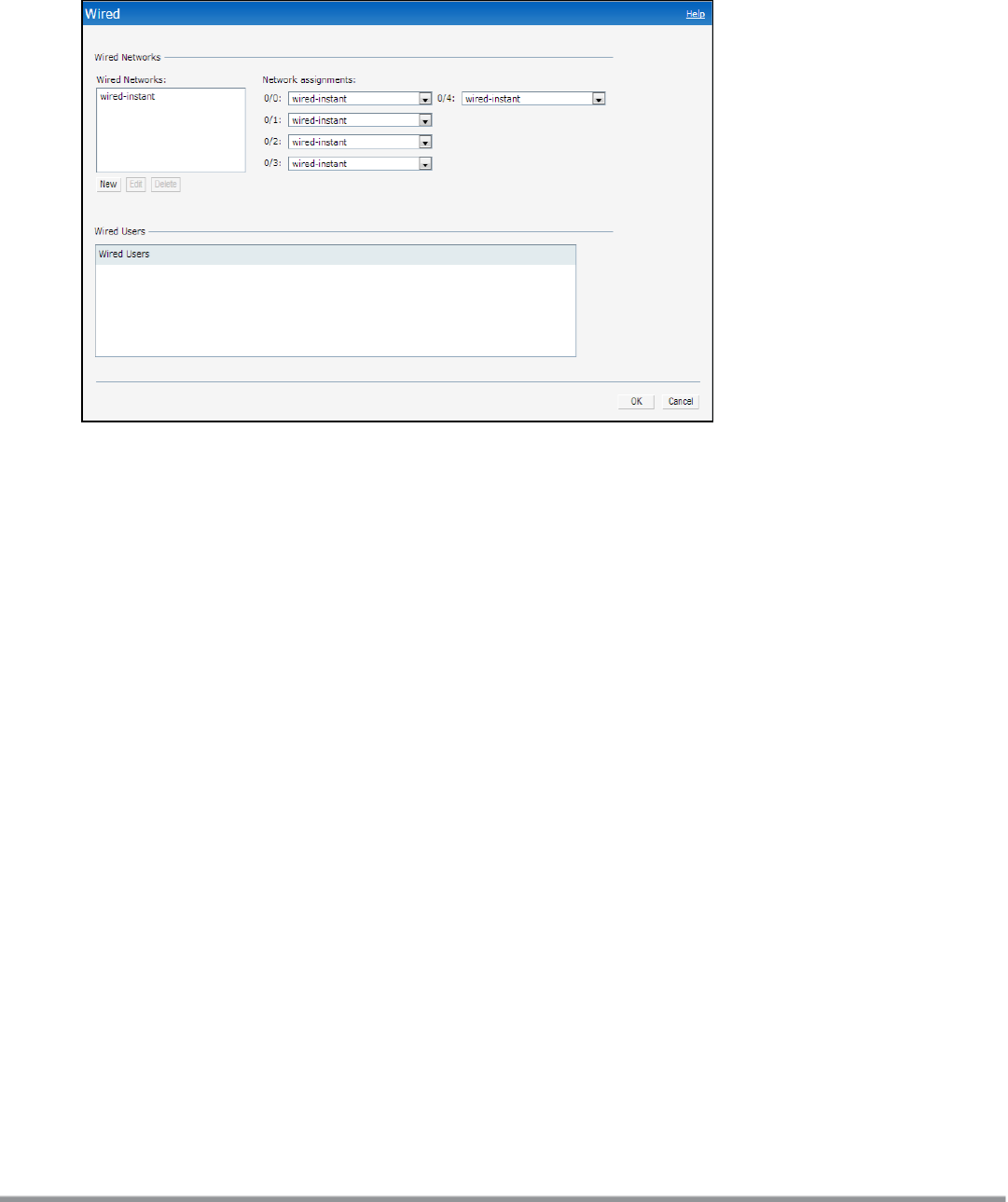Concept Guide
Table Of Contents
- About this Guide
- About Instant
- Setting up a W-IAP
- Automatic Retrieval of Configuration
- Instant User Interface
- Initial Configuration Tasks
- Customizing W-IAP Settings
- Modifying the W-IAP Host Name
- Configuring Zone Settings on a W-IAP
- Specifying a Method for Obtaining IP Address
- Configuring External Antenna
- Configuring Radio Profiles for a W-IAP
- Configuring Uplink VLAN for a W-IAP
- Changing the W-IAP Installation Mode
- Changing USB Port Status
- Master Election and Virtual Controller
- Adding a W-IAP to the Network
- Removing a W-IAP from the Network
- VLAN Configuration
- IPv6 Support
- Wireless Network Profiles
- Configuring Wireless Network Profiles
- Configuring Fast Roaming for Wireless Clients
- Configuring Modulation Rates on a WLAN SSID
- Multi-User-MIMO
- Management Frame Protection
- Disabling Short Preamble for Wireless Client
- Editing Status of a WLAN SSID Profile
- Editing a WLAN SSID Profile
- Deleting a WLAN SSID Profile
- Wired Profiles
- Captive Portal for Guest Access
- Understanding Captive Portal
- Configuring a WLAN SSID for Guest Access
- Configuring Wired Profile for Guest Access
- Configuring Internal Captive Portal for Guest Network
- Configuring External Captive Portal for a Guest Network
- Configuring Facebook Login
- Configuring Guest Logon Role and Access Rules for Guest Users
- Configuring Captive Portal Roles for an SSID
- Configuring Walled Garden Access
- Authentication and User Management
- Managing W-IAP Users
- Supported Authentication Methods
- Supported EAP Authentication Frameworks
- Configuring Authentication Servers
- Understanding Encryption Types
- Configuring Authentication Survivability
- Configuring 802.1X Authentication for a Network Profile
- Enabling 802.1X Supplicant Support
- Configuring MAC Authentication for a Network Profile
- Configuring MAC Authentication with 802.1X Authentication
- Configuring MAC Authentication with Captive Portal Authentication
- Configuring WISPr Authentication
- Blacklisting Clients
- Uploading Certificates
- Roles and Policies
- DHCP Configuration
- Configuring Time-Based Services
- Dynamic DNS Registration
- VPN Configuration
- IAP-VPN Deployment
- Adaptive Radio Management
- Deep Packet Inspection and Application Visibility
- Voice and Video
- Services
- Configuring AirGroup
- Configuring a W-IAP for RTLS Support
- Configuring a W-IAP for Analytics and Location Engine Support
- Managing BLE Beacons
- Clarity Live
- Configuring OpenDNS Credentials
- Integrating a W-IAP with Palo Alto Networks Firewall
- Integrating a W-IAP with an XML API Interface
- CALEA Integration and Lawful Intercept Compliance
- Cluster Security
- W-IAP Management and Monitoring
- Uplink Configuration
- Intrusion Detection
- Mesh W-IAP Configuration
- Mobility and Client Management
- Spectrum Monitor
- W-IAP Maintenance
- Monitoring Devices and Logs
- Hotspot Profiles
- ClearPass Guest Setup
- IAP-VPN Deployment Scenarios
- Acronyms and Abbreviations

Wired
The Wired window allows you to configure a wired network profile. See Wired Profiles on page 104 for more
information. The following figure shows the Wired window:
Figure 8 Wired Window
Services
The Services window allows you to configure services such as AirGroup, Real Time Location System (RTLS), and
OpenDNS. The Services window consists of the following tabs:
l AirGroup—Allows you to configure the AirGroup and AirGroup services. For more information, see
Configuring AirGroup on page 279.
l RTLS—Allows you to integrate AMP or third-party RTLS such as Aeroscout Real Time Location Server with
Instant. For more information, see Configuring a W-IAP for RTLSSupport on page 288.
The RTLS tab also allows you to integrate W-IAP with the Analytics and Location Engine (ALE). For more
information about configuring a W-IAP for ALE integration, see Configuring a W-IAP for Analytics and
Location Engine Support on page 289.
l OpenDNS—Allows you to configure support for OpenDNS business solutions, which require an OpenDNS
(opendns.com) account. The OpenDNS credentials are used by Instant and W-AirWave to filter content at
the enterprise level. For more information, see Configuring OpenDNS Credentials on page 293.
l CALEA—Allows you configure support for Communications Assistance for Law Enforcement Act (CALEA)
server integration, thereby ensuring compliance with Lawful Intercept and CALEA specifications. For more
information, see CALEA Integration and Lawful Intercept Compliance on page 298.
l Network Integration—Allows you to configure a W-IAP for integration with Palo Alto Networks (PAN)
Firewall and XML API server. For more information on W-IAP integration with PAN, see Integrating a W-IAP
with Palo Alto Networks Firewall on page 293and Integrating a W-IAP with an XMLAPIInterface on page
295.
Dell Networking W-Series Instant 6.5.1.0-4.3.1.0 | User Guide Instant User Interface | 36










